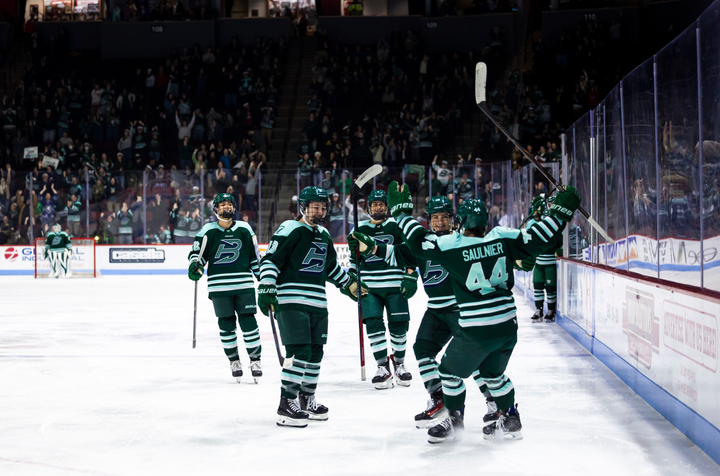Seattle’s Expansion Blueprint Points to a Defense-First Identity
Seattle is built to be a defensive, physical menace in its inaugural season.

Seattle's inaugural season in the Professional Women's Hockey League is shaping up to be a defensive showcase. From the Expansion Draft to the latest signings, the team is assembling a roster that emphasizes structure, reliability, grit, and a commitment to keeping games tight.
The Expansion Draft laid the foundation for this defensive identity. Seattle selected seven players, with four being defense. Notably, Aneta Tejralová from the Ottawa Charge brings experience, having played 30 games with 10 points last season. Her presence adds depth to the blue line and sets a tone for the team's defensive approach.
🚨 Aneta Tejralová (1)
— Ottawa Charge (@PWHL_Ottawa) February 4, 2024
🍎🍏 Emily Clark pic.twitter.com/uy6QhG04ZQ
In net, Corinne Schroeder gives Seattle a goaltender capable of stealing games. Last season she led the league with four shutouts, more than any other goalie, underscoring her ability to make big saves when the defensive structure is under pressure. Having her between the pipes lets Seattle trust that their back end can hold firm in tight stretches.
The 2025 PWHL Draft added rookies who complement that defensive philosophy. Jenna Buglioni, selected eighth overall, put up 45 points in 40 games at Ohio State. While on paper she is an offensive forward, she played in systems that demanded strong defensive responsibility and forecheck coverage, which suggests she could fit into a structure-first setup. Goaltender Hannah Murphy, drafted 15th overall, had a sub-1.60 goals-against average and a save percentage above .930 in college. She gives Seattle a high-floor option in goal as depth behind Schroeder, and potentially a plan for alternating starts or pushing for tight defensive games.
Star power is not absent. Seattle has Hilary Knight, Carpenter, Serdachny, Bilka, and Eldridge, all capable of generating offense. In fact, Seattle enters the season with three of the top 15 scorers from last year in Knight, Carpenter, and Eldridge. That means while the identity is leaning defensive, the team also has top-end offensive threats. It gives Seattle the flexibility to shift to offense when needed but always with support from a tough, physical blue line.
Meghan Turner, Seattle’s general manager, made clear at her first press conference that physicality will be central to the team’s identity. “I’m from Boston. And so I am partial to physicality, and I think it's an important part of the game in this League… playing through physicality and being able to make plays with very minimal time, knowing that … someone's going to probably play the body and look to take the puck away.”
She added “leaning into the physicality nature of it — controlled physicality, certainly — but speed, and playing well off the puck,” and that she wants Seattle to be able to generate offense by creating speed out of the defensive zone through the neutral zone and make space against opposing defense. These comments underscore that the team sees physicality not as an end in itself, but as part of a broader identity that includes speed, puck movement, and defensive responsibility.
Seattle’s approach reflects a strategic vision: build from the back end, ensuring a strong defensive foundation that can withstand the challenges of an inaugural season. As the season approaches, all eyes will be on how this defensive strategy translates on the ice. If the pieces fall into place, Seattle could very well become a team known for its defensive prowess, setting the stage for a successful entry into the PWHL.





Comments ()